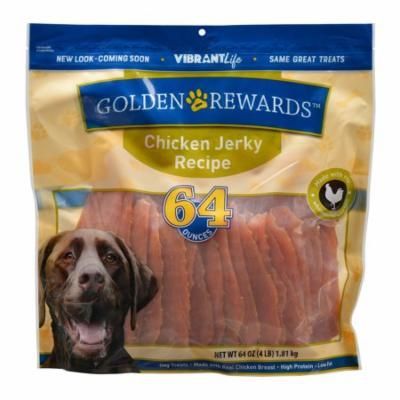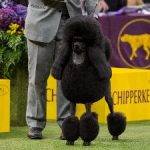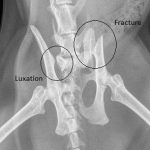
Rewarding your dog – Treats
When the dog realizes that it is being punished, a defense mechanism is triggered in its mind – fight or flight, causing unpredictable behaviour and an inability to learn effectively. Dogs that are reprimanded have an alarming increase in cortisol, the stress hormone. It is a neurotoxic substance which can cause memory impairment and constantly elevated cortisol levels can even weaken a dog’s immune system.
In the „Dear Dog” we do not punish dogs. We use rewards as motivators instead, and this chapter will focus on treats. Treats are the key to the dog’s mind. In other words, the way to our pet’s brain leads through the stomach! Cravings are useful because they can be dosed. When you want to express your appreciation, give them more. You can’t do this with other rewards (such as a car ride or a walk). Treats are the easiest and fastest way to teach your dog anything you want. The condition is that they must be treated as something special, something the dog will crave. That’s why it’s important to choose what, where and when you reward your pet.
The most important thing is that you never give out treats for free. Your dog has to deserve it. Otherwise, you will be writing off the most powerful tool in your training process. If a dog receives a reward that it doesn’t deserve, it will think that it doesn’t need to make any effort. Rewarding your dog for nothing will completely undo the entire training experience.
THE TREAT AS A TOOL OF INFLUENCE
Many times I have seen owners give their dogs treats when the dogs stare at them with charming, pleading eyes and act like they haven’t eaten in a year. How can you refuse when they ask so sweetly? It’s easy to succumb to the charm, but that’s no way to teach your dog good manners. People also mix different treats with dry food to encourage their dog to eat. This is just giving treats for free! Let your dog’s daily meals be of the best possible quality, but not too varied. That way you can give your pet the tastiest bites during games and exercise.
I once visited Maddie, a lovely golden cocker spaniel bitch, after her „mom”, Debrah, she turned to me for help. It seemed that Maddie was a great actress and didn’t react when Debrah gave her treats to enforce appropriate behavior. When I walked into the house, I immediately understood what the issue was. Maddie was a spoiled brat! There were plenty of toys scattered throughout the house, but Maddie ignored them. She also despised treats that would make any dog salivate. What a surprise! Debrah was deeply offended that Maddie ignored all those toys and treats she was getting so easily. I explained to her that she wasn’t giving the dog something she really wanted, so the dog had no interest in listening to her. And this was the reason why Maddie became more and more disobedient, just like a spoiled child.
We started by taking away all the toys and treats from your dog. From now on, they should only be used during training. Once Maddie realized that I was now in charge in their home, there was a significant change in her attitude. After the first week she began to be polite and appreciate certain gestures. She realized that the only way to get attention or get toys or treats was to behave appropriately.
The most common mistakes when giving out treats are giving them out too readily or the opposite – excessive stinginess. Your dog has to earn the reward, and dogs really love that. However, it is also wrong to take your pet’s efforts as something we deserve. Ignoring good behavior is a sure way to eliminate it. The truth is, if we reward the right responses, we’re more likely to get them.
Specific actions require different numbers of rewards, depending on the level of difficulty. If you’re trying to get your dog to do something completely different from what she’s interested in at the moment, your proposal has to be irresistible – a whole host of delicious treats that will be far more appealing to him than what he is currently engaged in. There are situations where I prefer to use toys over treats, but with items it’s hard to give them away in larger quantities, which I call „to win the jackpot”. Treats can make the lesson more effective as each reward is matched to the difficulty level of the task.
For some strange reason, people subconsciously give out rewards three at a time. You can often see that after the third reward, the dog will turn around and walk away. Believe me, these animals can count to three. We humans are becoming so predictable that the dog already knows that after the third surprise there will not be another one, so why bother? Who would want to put in extra effort knowing that their work will not be appreciated? Excellent behavior deserves special recognition!
During one of my appearances on the show „Today Show” The presenter, Matt Lauer, had to play the role of a dog, and I had to prepare an interesting presentation. In preparation beforehand, I interviewed him to determine what his favorite treat was! It turns out that chocolate. You should do the same for your dog.
To find out what your pet likes best, I suggest filling several bowls with different treats and placing them in front of them. For a week or so, observe which bowls he approaches most often and divide the treats into „golden”, „silver” i „brown”. Remember, his tastes may change over time, and different locations and anything that distracts him will significantly affect his desire for a treat.
There are many companies making nutritious dog snacks these days, but don’t blindly believe everything they say about these treats. Shiny labels and tempting advertisements are not the best indicators of healthy food. I recommend carefully and thoroughly going through the information on the packaging of store-bought foods and eliminating anything that contains fat and protein described as other than animal, meat or poultry by-products, as well as preservatives, butylhydroxyanisole (BHA), artificial colors and flavor enhancers, and sugar and corn syrup. Buy foods that contain ingredients you are familiar with, such as whole grains and vegetables. You can add healthy leftovers from your table to the list of good foods for your pet, as long as there are no spices or sauces in them. For example, this can include chicken (skinless and boneless), beef, boneless fish, eggs, small pieces of yellow cheese, vegetables (except onions), fruit (except grapes and raisins), and brown rice. My two dogs love salads with olive oil and lemon and rice and sugar free breakfast cereal.
When I eat at a restaurant, I sometimes take home a piece of steak or a hamburger, which later serves as „golden” treat. Even if you feel uncomfortable wrapping leftover food in a napkin at the time, do it. Those few square inches of leftover meal are a precious surprise that can provide a fantastic and unexpected incentive for your dog. When I eat an omelet for breakfast, I save two small pieces for the dogs later. I don’t do this every day, but every time I call Clyde’a and Duke’a, they are always eager to see what I have for them this time.
Mostly during training, I use my special chicken and liver flavored treats, which always help me get a head start on the new dogs I meet. In all my years of training, no dog has ever resisted them, so this is my surefire way. However, even in the case of expected positive results, it is important that the dog does not get bored with it, otherwise he may be more interested in chasing a bird in the yard than learning the command „stand back”.
When we play for the highest stakes, for example, we train a dog in conditions in which it is difficult to concentrate, or when the animal learns something new for the first time, I use „gold” treats. It could be my special liver-flavored treats or a rotisserie chicken from which I remove the bones beforehand and cut the meat into small pieces. I also use beef or small sausages – Only use lean meat – when I try to get my dog’s attention in a place where other animals are also present, for example in a park or on a crowded pedestrian street.
„Silver” treats, such as a piece of hard-boiled egg or a dog cookie, are rewards I use in moderately complex circumstances, such as for repeating a previously learned behavior. When you do a regular job, you get a steady paycheck, right? No bonus.
Treats „brown”, for example, vegetables in olive oil, fruit or food mixed with leftovers „golden” treats are rewards for tasks requiring minimal effort. They also help to keep the dog at the right weight, which is important to remember when using a lot of treats during training.
Remember that giving the same rewards over and over again will eventually get boring for your friend, no matter how much they tasted good at first. So try to vary them. Make your dog’s treats varied quite often and remember to surprise him each time.
You need to have some treats on hand at all times to reward the dog as soon as he executes the command correctly – after no more than three seconds. The animal always needs to know that it has done a good job. If more time passes, your dog will already be engaged in something else and will think he is getting a reward for nothing. If you delay giving a treat to finish a conversation, for example, and only then reward the dog, you’ll miss your chance. This includes showing dissatisfaction for not obeying a command, because after that the dog will no longer know why you are disappointed or angry. If your action is not immediate, the opportunity is lost. In order for your message to be understood by the dog, you must react at the speed of light.
When I train my dogs, I always have on hand two or three different treats broken into small pieces – I keep them in my hand, which I do not give signals to the dog. I also keep them in containers scattered around the house, in places where I spend time with my pets. Keep boxes of treats everywhere you hang out with your dog – in the living room, kitchen, bedroom and always at the door, where the animals are most lively. Whenever and wherever you teach your pet, have treats on hand so that you can immediately reward him when he shows you how brilliant he is.
RANDOM REWARDS: THE LAS VEGAS METHOD
There is a myth that says that if you use treats to train your dog, your pet will not listen to you when you stop using this method. People keep asking me if they will always have to give their dog treats to make him listen to them. The answer is no. At the teaching stage, this is necessary. However, when the dog understands what I want from him and performs it, I immediately move on to random rewards, also known as the Las Vegas method.
I am not saying that you should wean your dog off rewards completely. He just needs to know that there is always the possibility of winning the grand prize. Just like a game of blackjack in a casino, it only takes winning once to make you realize that it can happen again – so you keep playing! If your dog knows that „golden” the treat is there somewhere, this will encourage him to be more alert and to behave in the way you expect him to.
In order to decide how to use random rewards, I will describe the two phases of training a dog: the learning phase and the daily phase. In phase one, I reward the dog for all successes – big and small. During learning, all achievements are important. I use delicious „Golden” If you don’t act immediately, the opportunity will be lost. I focus on everything he does correctly. When he does something faster or better, he gets a series immediately „golden” rewards – five, six or seven in a row. I’m always very energetic about it. This is the main reward – he pulled the lever, heard that distinctive sound, and an endless stream of prizes started pouring out of the machine.
The next step is very important. When the dog begins to understand what I want from him, I move from rewarding every success to praising the dog’s behavior from time to time, but for exceptional achievements I still give the main reward. If I continued to give him treats for following every command, his behavior would deteriorate because there would be a lack of excitement and surprises. Psychologists call this random rewards, and gambling is a great example of this. It’s hard to stop playing when the good times are good. The rule is that we treat everything that is certain in life as if it were our due. If I completely eliminate treats or give them to my dog every time, he will lose his enthusiasm. Well-known behavioral psychologist, B.F. Skinner, discovered that when we give rewards only every now and then, the animal learns more willingly than when it gets them regularly. Random rewards are more appreciated and never taken for granted.
The right time to move from the learning phase (giving treats every time) to the daily phase (random rewards) comes when your dog already understands what you require of him. Some dogs will grasp this in a few minutes, others may take days. No matter how much time passes. The most important thing is to move from one phase to the other when you think your dog is starting to understand everything.
When you give your dog treats from time to time for appropriate behavior, he will think to himself: „Maybe I will win the grand prize this time too!”, and he will continue to do what you ask him to do. The difference between playing in a casino in Las Vegas and training your dog, however, is that in Vegas, the casino always wins. And using a method „Loving your dog”, everybody wins!
Every activity that is part of your dog’s daily routine should include an element of related training. For example, when your dog wants something, he always has to sit. Before he gets his breakfast, ask him to sit down. Before you play with him, ask him to sit. Before you put him on a leash, open the car door before a ride, give him a hug, ask him to sit. In this way, training will not be a separate exercise, done a few times a day for a few minutes. Will be an integral part of your dog’s life.
My Duke has been shedding a lot. When he came to live with me, he didn’t like to be brushed, but he needed to be combed, so I used the linked training method. Since he loved the daily excursions, I asked him to let me do one short brush stroke before I opened the door. Over time, I combed him longer. Now he gets excited when he sees a brush, because he knows it means going on a trip! With related training, you can stop giving your dog treats for everything. Once the animal sees the connection between performing an action and receiving a reward, it will understand what it is all about. Remember to give him the lead sometimes to keep his enthusiasm for training up, especially when he does something really special.
Make a list of everything your dog likes that causes him a state of excitement. It could be a walk, a massage, a kiss, a treat, a chew toy, a tennis ball toss, or an invitation to keep you company on the couch or bed when you get home. Then see which exercise works best with the activities listed. I teach my dogs that every reward must be earned and appreciated! Appreciation is something that needs to be taught not only to your pet but also to yourself, you need to practice it and make it a part of your pets daily life.
Treats as a tool for influence: Treats are both payment and motivation for your dog to learn new behaviors.
Gold, silver, bronze: Divide treats into three categories.
Immediate response: Give a treat within the first three seconds of the desired action.
Las Vegas Method: Use random rewards to keep your dog focused and interested.









